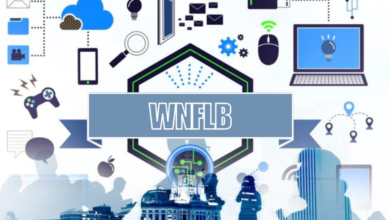Network Access Control: The Pillar of Modern Cybersecurity

What is Network Access Control?
Network Access Control (NAC) has become indispensable to modern cybersecurity strategies. But what exactly is NAC? It involves defining the processes and measures that ensure only authorized users can access a network and its resources. Network access control isn’t just about keeping intruders out; it’s about providing a structured entry and monitoring system that adeptly manages who can access the network and what they’re authorized to do once inside. This controlled access is a matter of protecting sensitive data and a vital principle of maintaining operational harmony within digital ecosystems.
Network access control revolves around proactive management of who gets in and with what permissions, making it a crucial part of network defenses. By controlling entries and ensuring systems adhere to organizational policies, NAC keeps threats at bay. This is particularly significant in today’s landscape, where cyber threats grow exponentially in volume and sophistication. Hence, NAC serves as a robust mechanism ensuring that the fundamental principles of cybersecurity are rigorously applied at every network gateway.
Key Components of NAC
- Authentication: This fundamental aspect ensures that users logging into the network are who they claim to be. Robust authentication protocols guard against impersonation and unauthorized access. Multi-factor authentication systems, for example, have become increasingly prevalent as they add layers of security beyond a simple password.
- Authorization: Once authenticated, it’s about what users can do. Authorization delineates permissions, ensuring everyone operates within their role’s constraints. Detailed role-based access control systems allow organizations to tailor the permissions to the specifics of the job functions, thereby mitigating the risk of accidental or intentional misuse of network resources.
- Compliance: Any device must meet specific security criteria before gaining access. This step minimizes risks by assuring that only those devices that meet predefined standards can join the network. Compliance checks can range from ensuring that the latest security patches have been applied to verifying that an active antivirus program is running. This level of scrutiny dramatically reduces the likelihood of a compromised device entering the network.
Importance in Cybersecurity
Why is NAC deemed so essential in today’s cybersecurity landscape? Its potent defense against illegal access and data breaches holds the key to the solution. With cyber threats continually evolving, the functionality of NAC extends beyond mere entry denial to encompass continuous monitoring and assessment of network anomalies. NAC serves as the first line of defense when cyber threats constantly change, as highlighted by recent news reports on cybersecurity enhancements. By establishing stringent controls and monitoring entry points, NAC protects sensitive data and ensures operational continuity. With increasing regulations around data protection, such as GDPR and CCPA, NAC solutions ensure organizations can meet compliance requirements while fortifying themselves against potential breaches.
Real-World Applications
The theoretical benefits of NAC are vast, but how do they play out in real scenarios? For instance, NAC is pivotal in securing transactions and customer data in financial institutions. With its intricate networks and sensitive client information, the financial industry uses NAC to safeguard and adhere to strict compliance mandates requiring detailed accountability and monitoring.
Schools and universities also leverage NAC to control and secure networks used by students and staff. With educational institutions often hosting thousands of devices, NAC ensures that each connection meets school policies, thereby preventing unauthorized access to potentially sensitive student information or research data.
Meanwhile, healthcare providers use NAC to protect sensitive health records, ensuring compliance with stringent regulations such as HIPAA. To preserve patient privacy and uphold the safety and trust of their treatment, hospitals, and clinics must ensure that every device connecting to their network is secure and compliant.
Challenges and Considerations
The path to effective NAC deployment isn’t devoid of challenges. As organizations strive for comprehensive coverage, they might face issues related to complexity and scalability. From device compatibility to user management, the hurdles are real. The trade-off often involves balancing stringent security measures and ensuring a seamless user experience.
A leading technology news outlet recently discussed these challenges, noting that seamless integration into existing IT infrastructures can be an uphill task. Organizations need to weigh these considerations against the benefits while adopting NAC solutions. This means looking at vendor solutions that offer easy integration capabilities and scalability options that can grow with the organization’s needs.
Future Trends in NAC
The future of NAC is intertwined with technological advancements. With the ongoing development of AI and machine learning, NAC is more proactive than ever, thanks to its unparalleled potential in predictive threat analysis. These technologies can assist in identifying and reacting to threats before they manifest, giving network administrators an edge against increasingly sophisticated cyber attackers.
The shift towards cloud-based solutions also promises agility and scalability, allowing businesses to adjust to changing demands without compromising security. As more organizations move their operations to cloud environments, the demand for integrated cloud NAC solutions is anticipated to grow, providing flexibility while continuing to uphold robust security measures.
Conclusion
Network Access Control is an essential pillar in fortified cybersecurity frameworks. By focusing on authentication, authorization, and compliance, NAC ensures that networks remain protected against various threats. The adaptive nature of NAC technologies signifies their critical role in the ever-evolving cybersecurity landscape.
As technological innovations continue to shape the digital landscape, the evolution of NAC will undoubtedly play a critical role in securing future networks. For groups aiming to safeguard digital assets in a more interconnected landscape, NAC strategies must be current and in sync with contemporary issues.
Keep an eye for more latest news & updates on GREAT BEND JOURNAL!




